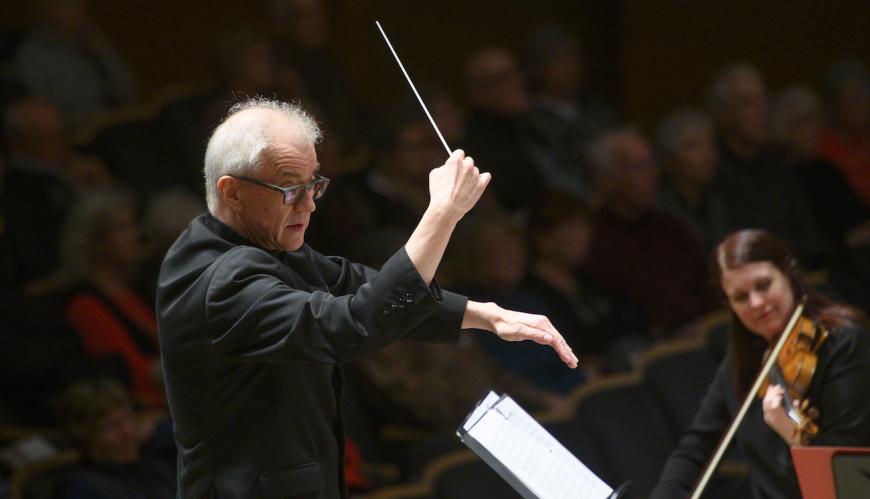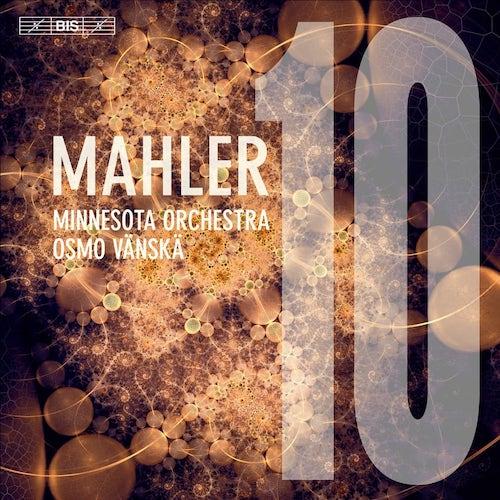
There are dozens of recorded cycles of the Mahler symphonies that call themselves “complete.” Yet of these, only about five ought to be considered genuinely complete. These are the ones that dare to include all five movements of the Symphony No. 10, which, though unfinished by the time Mahler died in 1911 at the age of 50, was sketched out in an unbroken line from start to finish. Osmo Vänskä’s emerging cycle with the Minnesota Orchestra aims to join the few that include the whole 10th, which has been just issued on a splendid-sounding SACD (BIS).

There are several performing versions of the partially orchestrated sketch, some more elaborately filled in than others, but all are essentially of the same continuous piece. Read the score or play it on the piano: The published version of the most commonly-performed version is by the English musicologist Deryck Cooke, and it will show you which notes are Mahler’s and which are Cooke’s. Every bar, even if it is just a single line in a few spots, has Mahler’s notes in it. And if you still think that the Cooke version is “not Mahler” — as Carlo Maria Giulini once insisted to me — then it follows that Deryck Cooke must have been a genius, too, for this is great, profound, emotionally wrenching music which ought to be played without fear or guilt.
More 10ths have been showing up lately; the most powerful one to come my way was Thomas Dausgaard’s passionately supercharged rendition of the Cooke edition in Seattle (SS Media). Vänskä, who uses the 1989 Cooke edition, hears it with a cooler temperament in line with the earlier entries in his cycle. He takes parts of the first movement very slowly, but always in accordance with the marked alternations between Andante and Adagio, and he gets the Minnesota strings to play with exquisite, at times barely audible softness. The big shock chord at the crux of the movement — which I interpret as Mahler staring into the abyss of 20th century atonality and pulling back in horror onto safer 19th-century ground — still makes its impact.
Scherzo I hurtles along at a fast, jaunty clip, the tiny Purgatorio central movement is deliberately paced but with sharp accents and rhythm keeping it on track, and Scherzo II deftly juxtaposes anguish and grace. It is in the long Finale where Vänskä really shines, maintaining the line of tension particularly in the final 10 minutes where many performances tend to flag. The low brass have a foreboding Nordic tone, the flute solo is cool and clear, the strings are warm and almost Philadelphian in quality, the phrasing tender and emotional yet always under control.
Those who have followed the changes in the Cooke version over the years will find some neat details to pick at. The cymbal crash in the final bar of Scherzo I, which was present in the first edition and removed in the next, is back; the clattery xylophone in the first edition of Scherzo II is gone; the extra thwack of the bass drum that opens the Finale is back in place; and so on and so forth. The sound is staggeringly clear, the most detailed recording job that this symphony has received, yet it doesn’t call attention to itself, with very little action in the rear speakers when heard in surround mode.
So, where are we in the Vänskä cycle? With the issue of the complete No. 10, only Symphonies No. 3, 8, and 9 are missing. Three was scheduled to be performed and recorded last June but was cancelled — and given COVID-19 restrictions, don’t hold your breath for a performance of No. 8, the “Symphony of a Thousand,” anytime soon. Yet Vänskä is burrowing deeper into the soul of Mahler in his nonflashy way the further he goes, and this 10th is the most moving performance I’ve heard in the cycle so far.
Other recommendations for Mahler 10ths in various Cooke editions — the Dausgaard mentioned above; either the Bournemouth or Berlin recordings of Simon Rattle, who was out there early as a fervent Mahler No. 10 champion (EMI or Warner Classics); and the pioneering Eugene Ormandy/Philadelphia recording, which still draws the most blood (Sony). Also, seek out Rudolf Barshai’s own convincing realization with the Junge Deutsche Philharmonie (Brilliant Classics).




